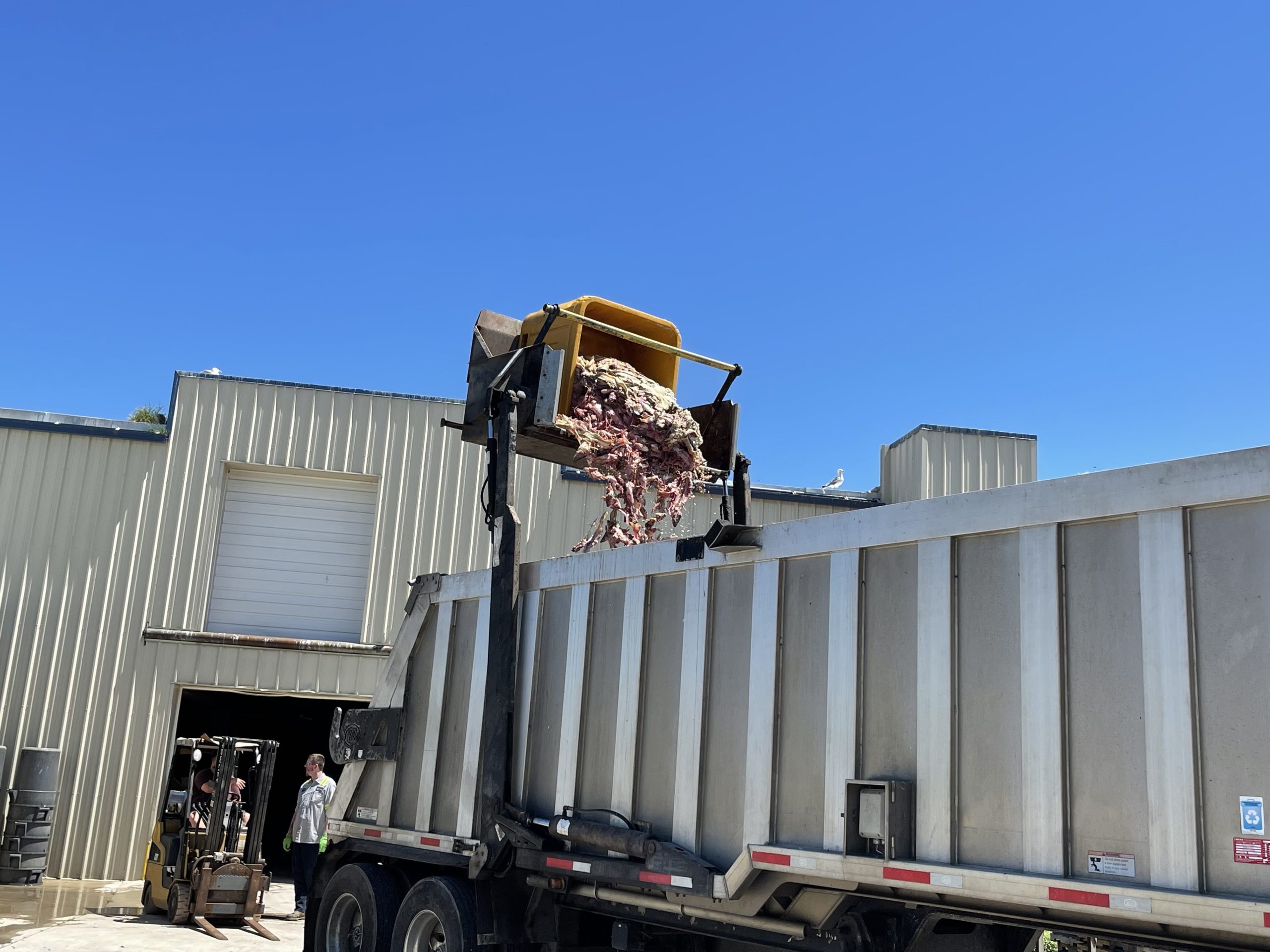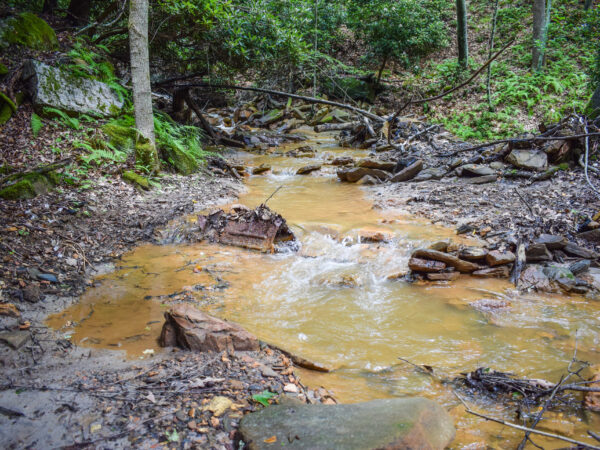
If you catch fish in a Great Lakes state on a river, pond, stream or reservoir and keep any to eat, most likely you’ll have to clean them yourself. But if you get close to one of the big lakes, especially Lake Erie, you could have a fish cleaner do it.
Hundreds of such places are located around Great Lakes fishing hotspots, and the people who do the work are pretty good at separating the meat from the bones.
“I’ve seen ‘em clean perch and they don’t even look at the fish they’re looking at you and cleaning the fish,” said Bob Boytim.
The 92-year-old has been in the fish-cleaning business for more than two decades and said it can be hard work. “I’ve seen ‘em clean fish all night. I got there one time, and I hauled ice up there and Saturday afternoon about 1 o’clock they were so busy so I stayed and helped. Weighed them in and took them out of the scaler and washed ‘em and packaged them and so on. Stayed until Sunday morning then I had to go to church so I left.”
Fish cleaning is a hyper-seasonal, on-demand affair. The work is plenty when weather allows and fishing is good at the same time. Otherwise, there is no business. When the conditions are right, a fish cleaning house must be there, be open and crank out the filets until there are no more fish.
How it works
To utilize the services of a fish-cleaning house, first you must catch the fish. Sometimes easier said than done. Once you remove the fish from the lake, you throw them on ice and take them to the fish house. There, they’ll get dumped into a container draining ice and water and get weighed. Yellow perch usually get calculated by the pound, and sometimes walleye get calculated by the pound, while some cleaners charge a flat rate per walleye.
Of course, cleaning rates vary by location, but in western Lake Erie, yellow perch runs about $1.25 per pound, walleye at about 75 cents. Big fish like salmon and trout are often priced at a flat rate of between $3 and $6 per fish. Special services like zippering filets or cutting cheek filets out cost a little more. Fish cutters keep about 40 percent of the price.
Some fish are scaled, others aren’t. After scaling, a cleaner lays the fish out, makes a few fast, expert cuts and separates the meat from the fish. The customer’s fish is then bagged up and tagged and refrigerated. A good fish cutter can clean several fish a minute.
After paying, anglers are given an all-important claim ticket. Generally, the ticket MUST be presented to claim the filets. If it’s not busy, fish can be cleaned while you wait. If the fishing’s hot in the area, customers may often wait hours to pick up fish. After a few days, unclaimed fish are frozen and sometimes kept for a long time.
“They’re pretty much kept all summer because they have a claim ticket on them and some people might forget, then they might come back for them,” said James Warnke, whose been cleaning Lake Erie fish for years, often at Shatto’s Fish Cleaning in Oak Harbor, Ohio. “If they bring their claim ticket, we give them their fish.”
As mentioned, the claim ticket is crucial. No claim ticket, no fish, said Boytim. And shenanigans are the reason.
“We had a group come in here there was six in the group and they paid for the fish, then five of them left,” he said. “One stayed there, and he knew what the number was and waited until the fish got cleaned and gave them the number and got the fish.
“Well, the group came back and wanted to pick up the fish with their ticket, but the fish were gone. So we had to go to the Port Clinton Fish Company and buy fish and give it to them.”
And then there are people who try to get bumped up in the line, Warnke said.
“They’ll try to give you extra money, it happens a lot,” he said. “But no, you just gotta wait your turn.”
On a cautionary note, Warnke said anglers should never skimp on ice.
“Yeah, I’ve gotten fish where people just didn’t put enough ice on them, and you can tell right away,” he said. “We’ll clean them, but I tell people I think they’re rotten and I wouldn’t eat them if I were you.”
He also said occasionally people bring in walleye that are under 15 inches in length, meaning illegal to possess. In those cases, he said most anglers say they didn’t realize they were too small, and so he measures them on the board if they’re present, then returns them whole.
More than just yellow perch and walleye
While the most common fish at Lake Erie fish cleaning businesses are yellow perch and walleye, all types of fish come through the door including catfish, white perch, white bass and others. Fact is if it’s a legal fish, it will get cleaned. The caveat is that some fish cleaners decline to clean yellow perch less than six inches.
“They need to be thrown back so they can grow a little,” Warnke said. “One time someone brought in a dogfish (also known as a bowfin) and they knew what it was, but they said they didn’t know what the meat was like. Well, it was like mashed potatoes.”
Warnke said some folks bring in sheepshead (also known as freshwater drum) to be cleaned, though most anglers detest the fish. But Boytim said he loves sheepshead, and they’re great if you know how to prepare them.
“What you do is you don’t filet them out you whole dress them with the bones in and you don’t pan fry them, you get a big kettle and you deep fry it and just before the fish is done, you throw one of your old shoes in with it and when the fish is done you throw the fish away and eat your shoe,” he explained, smiling. “That’s how you prepare sheepshead.”
Some fish come with a prize
Occasionally anglers or fish cleaners find a surprise. Landing a Lake Erie walleye with some type of external tag means the fish has been handled and marked by researchers – and that sometimes means a small payday is ahead.
“Usually, they’re a bright color to try to attract the attention of commercial fishermen or an angler so they see it and they know there’s a transmitter inside the fish,” explained Matt Faust, a biologist at the ODNR’s Sandusky Fisheries Research Station. “If you harvest a walleye with a transmitter, which is about the size of a tube of Chapstick, you may get $100.”
Faust said anglers often miss the tag, but people who clean fish for a living are good at finding them.
“Then we usually try to talk to the person who caught the fish or in the case of a fish cleaner, who cleaned it and has the tag,” he said. “We want to find out when and where the fish was caught. We’ll send them a package so they can return the transmitter.”
The prices of commonly used transmitters can be $350, and fancier versions can cost more, according to Faust. So, getting them back so they can be re-used is important. And so is visiting sites where fish are cleaned.
“Sometimes our staff will go the cleaning houses and work with them while they’re fileting fish, we can get information we use with our creel surveys,” Faust said. “We’ll get length and remove bones from the fish heads that allow us to estimate age and we get sizes of fish being harvested so we can use that information. These types of visits are actually way more important in terms of fisheries management than any of the tagging data.”
What happens to all the leftover stuff?
Anywhere on the Great Lakes where there is sport angling, hotels and Dumpsters, it’s likely there will be signs that read “No Fish Guts!” or “No Fish Cleaning in Rooms.” So, after anglers filet or dress their fish, what happens to all that extra stuff?
Many times anglers simply toss their fish carcasses into nearby water, though in most places, that’s definitely not considered proper.
Reid Van Cleve, an Ohio wildlife officer, said he and other officers don’t often write citations for it because they rarely see it happen. Those tickets that are written are usually the result of a phone call and could result in a fine of up to $500.
“Yeah, usually it comes from a complaint from someone on the water like in a marina,” he said. “If we write a ticket, it’s considered stream littering.”
Van Cleve said frequent dumping of fish carcasses into the lake means fish washing ashore and decaying and creating a mess for folks who live on or visit shores and beaches.
But to Fritz Dramm, smelly fish guts aren’t so bad. His Manitowoc, Wisconsin-based business makes specialty tools and equipment for the greenhouse industry. And as a sideline, they produce fertilizer used to grow organic crops.
“We bring in fish offal, the guts and heads and racks and what’s leftover from different sources around the Great Lakes and put together a 35-to-40,000 pound load that gets shipped to our plant in Algoma where we grind it up and do some things to it and eventually it becomes fertilizer,” he said.
The fish are collected from commercial fish cleaning operations, smaller fish cleaning houses and sites where recreational anglers clean their own fish. His company picks up the refrigerated or frozen carcasses and creates value from a product no one wants.
Boytim said there’s an outfit that collects his leftovers though he’s not sure what becomes of them.
“I’m just happy to have them get it out of here,” he said. “Before that we had to take them to a landfill.”
A call to the local landfill near Boytim found that unenthusiastically, they would accept fish carcasses at a rate of $90 per ton.
But Dramm gets its fish for free and spends a good deal of effort to attain a handful of organic-certified designations, which make it’s Drammatic Earth Friendly Fertilizer a valuable commodity among organic growers and hobbyists.
Most of Dramm’s fertilizer is sold in bulk liquid form to commercial growing operations in the Midwest. The rest is shipped to retail outlets.
“If we can get it to our plants before it goes bad we can make a very nice fertilizer – we’ve been making it for about 20 years now as Drammatic,” Dramm said. “But for years before that this process was being done by an old fishermen in town here in Algoma who started it many years ago. We’ve got a pretty good-sized plant and we store quite a bit of product every year and grind up quite a bit of fish.”
Catch more news at Great Lakes Now:
First in decades, a new Great Lakes freighter joins fleet
Featured image: A Darling Ingredients truck collects fish offal from the Port Clinton Fish Company. (Photo by James Proffitt)




